E Raj
Systematic review to evaluate a potential association between helminth infection and physical stunting in children
Raj, E; Calvo-Urbano, B; Heffernan, C; Halder, J; Webster, JP
Authors
B Calvo-Urbano
C Heffernan
J Halder
JP Webster
Abstract
Background: Despite considerable public health efforts over the past 20 years, childhood stunting (physical and/or cognitive) levels globally remain unacceptably high-at 22% amongst children under 5 years old in 2020. The aetiology of stunting is complex and still largely unknown. Helminths can cause significant mortality and morbidity and have often been cited as major causative agents for stunting, although their actual role in childhood stunting remains unclear. Our aim was to systematically review the current evidence to help support or refute the hypothesis that helminths cause physical stunting in children. Methods: Inclusion criteria were as follows: infected with (and/or exposed to) helminths (soil-transmitted helminths, schistosomes or food-borne trematodes), children, pregnant or breastfeeding women as study participants (children included infants 0-1 year old, preschool-age children 1-5 years and school-age children > 5 years old), anthelmintic treatment intervention, stunting-related variables reported (e.g. height, height-for-age z-score, birth weight), helminth infection reported in relation to stunting, any geographic location, any date, peer-reviewed literature only. Exclusion criteria were: non-primary research, study protocols, studies with no new data, non-English language papers and animal (non-human) helminth studies. Seven databases were searched on 28 May 2021. Risk of bias was assessed for included studies and GRADE was used for studies included in RCT subgroup meta-analyses (in preschool-age children and pregnant women). This systematic review was registered with PROSPERO (CRD42021256201). Results: Eighty studies were included in the analyses. No significant overall evidence was found in support of the hypothesis that helminths cause physical stunting in children, although there was some association with wasting. Conclusions: Whilst analyses of the available literature to date failed to support a direct association between helminth infection and childhood stunting, there was significant heterogeneity between studies, and many had follow-up periods which may have been too short to detect impacts on growth. Most apparent was a lack of available data from key demographic groups wherein one may predict the greatest association of helminth infection with stunting-notably that of infants, preschool-age children, and pregnant or nursing women. Thus this review highlights the urgent need for further targeted empirical research amongst these potentially most vulnerable demographic groups.
Citation
Raj, E., Calvo-Urbano, B., Heffernan, C., Halder, J., & Webster, J. (2022). Systematic review to evaluate a potential association between helminth infection and physical stunting in children. Parasites and Vectors, 15(1), https://doi.org/10.1186/s13071-022-05235-5
| Journal Article Type | Article |
|---|---|
| Acceptance Date | Mar 10, 2022 |
| Publication Date | Apr 20, 2022 |
| Deposit Date | Aug 19, 2022 |
| Publicly Available Date | Aug 19, 2022 |
| Print ISSN | 1756-3305 |
| Electronic ISSN | 1756-3305 |
| Publisher | BioMed Central |
| Peer Reviewed | Peer Reviewed |
| Volume | 15 |
| Issue | 1 |
| DOI | https://doi.org/10.1186/s13071-022-05235-5 |
| Keywords | Soil-transmitted helminths; Schistosomes; Stunting; Children; Infants; Pregnant women; Systematic review; Meta-analyses; z-scores; SCHOOL-CHILDREN; SCHISTOSOMA-HAEMATOBIUM; ANTHELMINTIC TREATMENT; NUTRITIONAL-STATUS; PRAZIQUANTEL TREATMENT; TRICHURIS-TRICHIURA; PERINATAL OUTCOMES; IMPROVES GROWTH; PREGNANCY; ASCARIS |
Files
Systematic Review To Evaluate A Potential Association Between Helminth Infection And Physical Stunting In Children
(1.8 Mb)
PDF
Licence
http://creativecommons.org/licenses/by/4.0/
Publisher Licence URL
http://creativecommons.org/licenses/by/4.0/
Version
VoR
You might also like
Evolution of tetraspanin antigens in the zoonotic Asian blood fluke Schistosoma japonicum
(2023)
Journal Article
Is the incidence of congenital toxoplasmosis declining?
(2022)
Journal Article
Downloadable Citations
About RVC Repository
Administrator e-mail: publicationsrepos@rvc.ac.uk
This application uses the following open-source libraries:
SheetJS Community Edition
Apache License Version 2.0 (http://www.apache.org/licenses/)
PDF.js
Apache License Version 2.0 (http://www.apache.org/licenses/)
Font Awesome
SIL OFL 1.1 (http://scripts.sil.org/OFL)
MIT License (http://opensource.org/licenses/mit-license.html)
CC BY 3.0 ( http://creativecommons.org/licenses/by/3.0/)
Powered by Worktribe © 2025
Advanced Search
